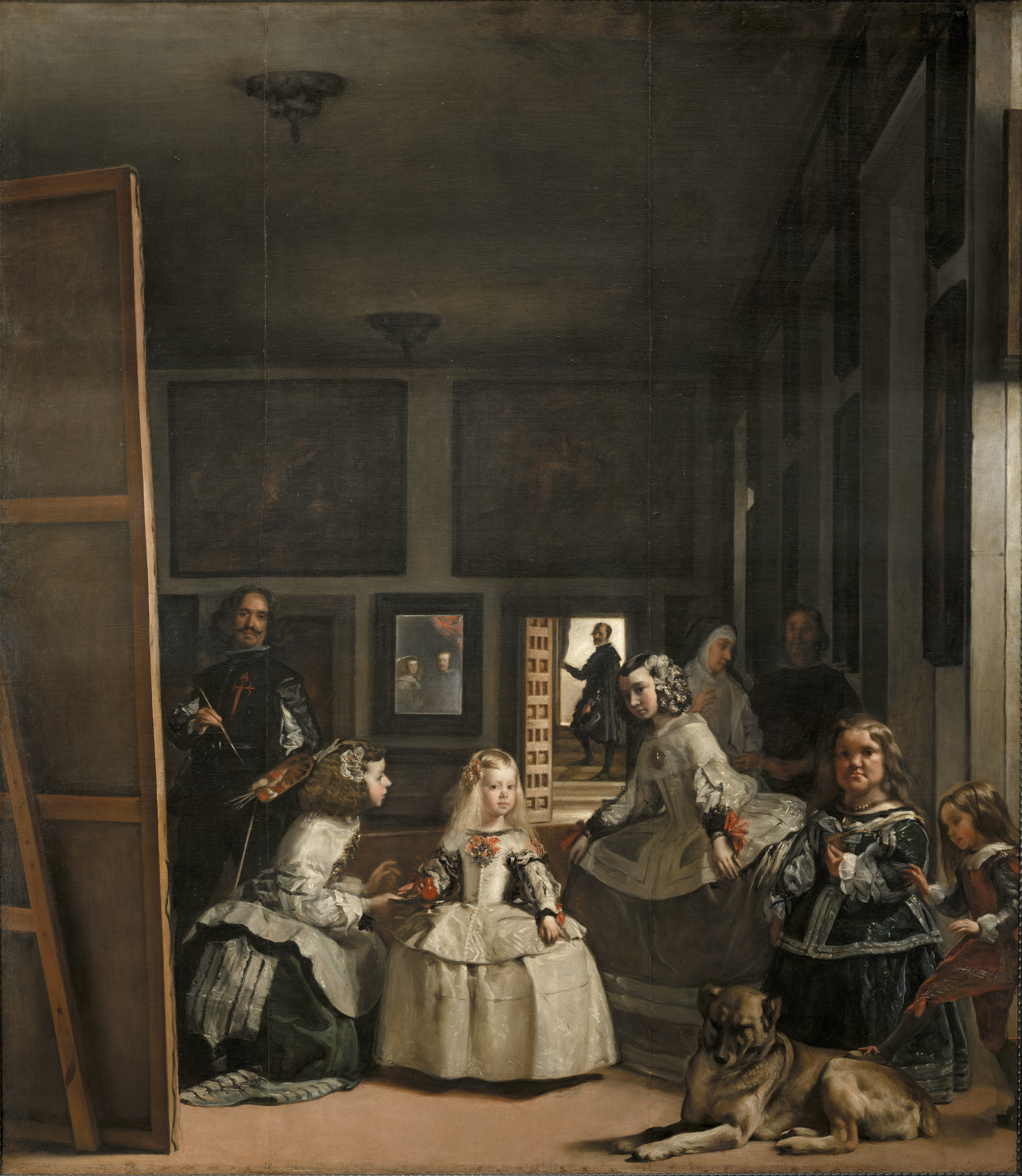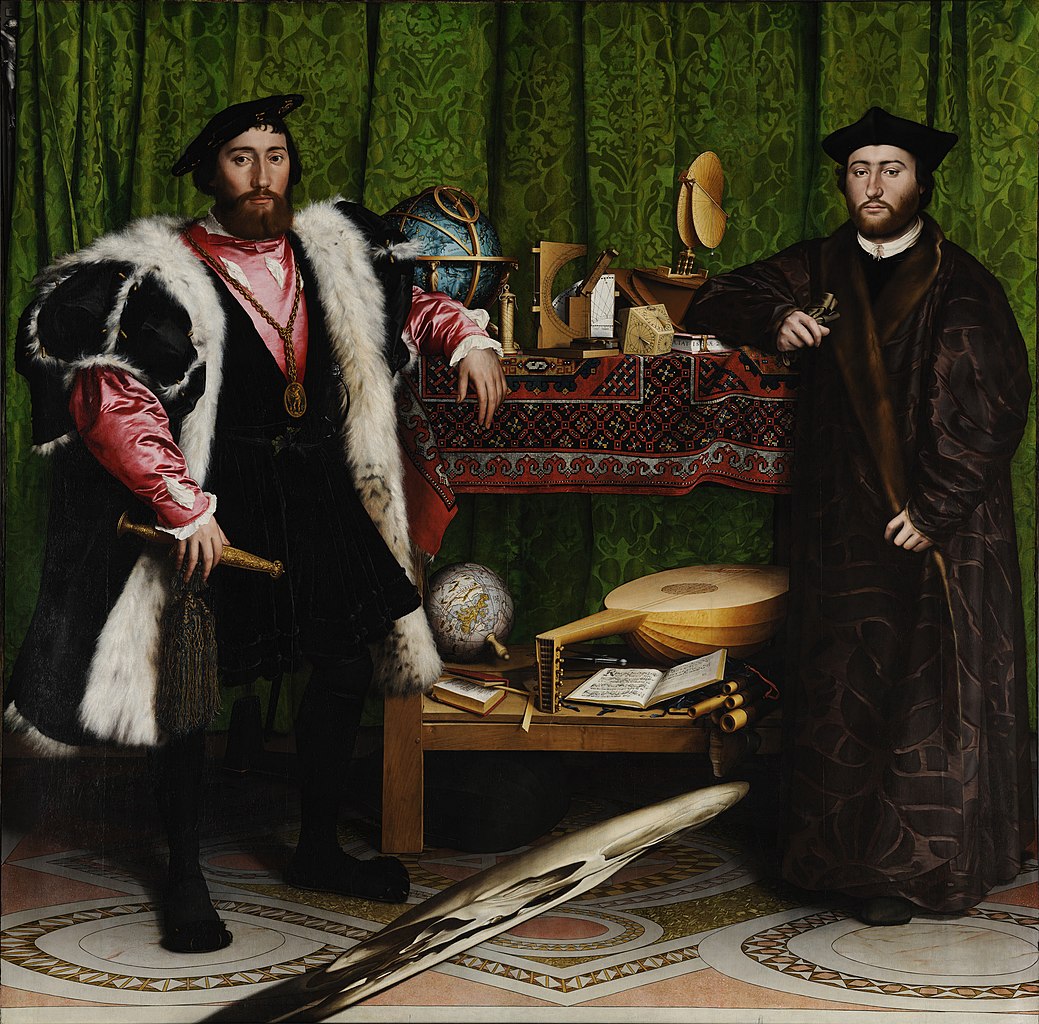
In Lacan’s seminars, he discussed the artists Cézanne, Holbein and Velasquez. In each case the fil rouge which connected Lacan’s thought was the idea of shifts in perspective leading to ways in which the artist had produced a work that evoked the experience of the “gaze”. In Seminar XIII, in discussing Velasquez’ Las Meninas, Lacan identifies the “picture within the picture” which we see Velasquez working on, as the Vorstellungsrepräsentanz , the representative of the representation. Lacan very clearly distinguished representation as being on the side of signification, whereas the “representative of representation” as being on the side of the signifier. In Las Meninas the “picture in the picture” is painted by Velasquez at the conjunction of two perspectives which are impossible in one space. Lacan said the “picture in the picture” as the “representative of representation” casts uncertainty on other “representations” in the painting. These other “objects” take on this disturbance of perspective in a domino effect, which allows many elements of the painting to take on this “representative of the representation” effect. This destabilizing of the visual space of the painting allows for displacements and condensations of images in the painting. An endless series of questions arise about the relations between the elements in the painting. People have talked about this painting for 350 years! What grounds the artist’s ability to do this is a masterful knowledge of his craft and an appreciation of a beyond of representation. With Las Meninas, it is Velasquez’ ability to construct an impossible melding of perspectives that keep the viewer is suspense.
When serious artists use all of their knowledge as artists to attempt to render something beyond representation, they are structurally placing themselves in the position of evoking the gaze for their audience. They do not transmit their knowledge directly to the audience. Velasquez used his knowledge from the arts of perspective and from other domains of artistic technique. This is similar to the analyst who must have knowledge of many kinds which are transmitted to him in the learning of his craft. But he cannot use this knowledge directly, it only sustains his attempt to stay in the position of “objet petit a”. Similarly the artist cannot simply tell you what he means or transmit his knowledge directly.
An example of this in cinema is the ending of the movie 2001: A Space Odyssey by which was written and directed by Stanley Kubrick.
The trip through the wormhole takes our protagonist to a particularly ambiguous environment, adorned with luxurious furnishings but maintaining a clinical or rather detached, oddly misunderstood and superficial facsimile of luxury. Here Dave runs through his life, in fast forward until he dies and is reborn in the form of the ‘Star Child’. The cuts we see here have Dave observing himself in the third person, then we switch over to the other Dave and follow him. This device is an ingenious way that Kubrick elegantly side steps the use of the montage technique, simultaneously progressing time without resorting to fades, whilst furthering the artificiality of the environment (with) a deliberate manipulation of time.
In order to understand what’s brought us to this point it’s now necessary to consider the monolith. It’s arrival at the dawn of man spurred the next step in human development, man begins to use tools, and rapidly the balance of power shifts in his favour, even within his species. The famous moment of the bone being thrown into the air and the jump cut to the spaceship is making a parallel between the two tools, the bone and the spaceship, and this illustrates a defining moment on evolution where man begins to use tools, the rudimentary bludgeon to begin with through to the sophisticated space ship. The point at which the aliens have interacted with humans again coincides with the point that artificial intelligence, in the form of HAL, has arrived. HAL is the tool that becomes a threat to humanity, it’s sophistication approaching and reflecting, possibly fully achieving, the emotional capabilities and immaturities of humans, becoming sophisticated to the point where it almost becomes more human than the rather unemotional creators. As Dave’s journey approaches its end we see him observing the final stage of life as we know it, that of death. Once again the transition is seamless as we move into the dying moments of the current stage of human existence, an existence that must end to make way for the next step. The Monolith reappears again at the time of Dave’s impending death, when he dies the Star Child is born, the transcendent being that exists literally and in every way above humanity. The monolith then returns Dave back to Earth. The cycle of his trip and the cycle of the films arc is completed as we see the beginning of a new phase of humanity again.

Jacques Lacan exemplified the presence, the encounter with the gaze with Hans Holbein’s painting “The Ambassadors”. The 16th century interior in which the two characters are represented is violently disrupted by a figure in the middle, which at a first sight resembles nothing and puzzles the viewer. The figure of the skull floating randomly between the painting’s borders annihilates everything the painting otherwise depicts. All the symbols of power, arts and science are disavowed by the view of the skull, which stresses the futility of everything in the symbolic order. I am bringing this 16th century painting into discussion because I find the skull’s intrusion, given as an example of the power of the gaze by Lacan himself, similar to the presence of Kubrick’s black monolith in the middle of the white neoclassical room, as well as in the African Savannah. This element’s presence is uncanny. The monolith is there but viewed from a rational perspective, shaped by the rules of the symbolic world, it is not supposed to be there. The image is complete without it and its presence only bothers, stirs and makes the viewer uncomfortable, exactly as the skull in Holbein’s painting. But in contrast to the skull, the monolith has a neutral shape, cannot be read as an imagistic symbol for anything. It is a black block with no traces of features to trigger any kind of connotative meaning, in the middle of an image which would make perfect sense otherwise. Unlike the skull which is immediately read as a symbol of death, as a memento mori, the monolith stands for nothing but itself. One cannot pinpoint its nature or its purpose, its beginning or its end, the only fact that one can know is that the monolith exists, it is real and it is present. Furthermore, it is literally a foreign body, an extraterrestrial entity.
In what concerns the last apparition of the monolith, it seems to force itself in the symbolic structure. The visual contrast between the white room and the black entity enforces the differences in the nature of the two. Bowman, the human subject is “trapped” in the room, he cannot escape the influence of the monolith. His behaviour does not change, but he involves in a silent dialogue with the monolith, a dialogue which is beyond words, which has no use or need for language. It is so powerful that defies language, and with it defies the worldly order and structure. The dialogue between the monolith and the character is out of reach for the spectator, but, nevertheless, the monolith’s power, the gaze, transcends the screen and proposes a different dialogue to every eyes which are set on it, because one cannot avoid the gaze.
Maybe the final encounter with the monolith is not meant to be deciphered like one would crack down a code, like it would be a conglomeration of symbols which read in the correct order and by the right pattern reflect the great truth. Maybe it is supposed to be felt, and it is itself an encounter with the great truth, with the big Other, an encounter with no need for words, or symbols, or meanings. Maybe it is so puzzling because of our need for structure, for meaning and because of our incapacity to accept the existence of non-sense and only of senses. It might just be a moment of freedom for the character and for the spectators and the movie closes to an end with the Star Childs gaze at the spectator. And therefore, the monolith is the “representative of the representation”. A monolith within a monolith. A fantasy.
From:
- http://convergencia.aocc.free.fr/texte/simpson-a.htm
- http://cynicalcelluloid.blogspot.in/2012/01/2001-analysis-of-last-10-minutes.html?zx=e7fb7312030e1b83
- http://mariabiancam.coventry.domains/screen-cultures-and-selves/kubricks-monolith-and-lacans-gaze/
Further Reading: